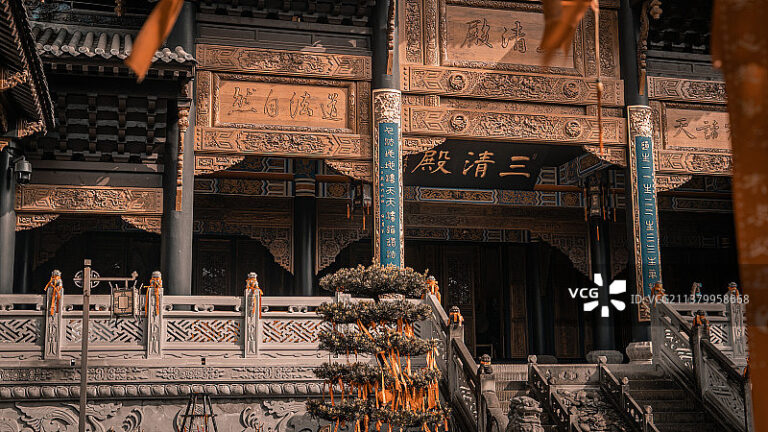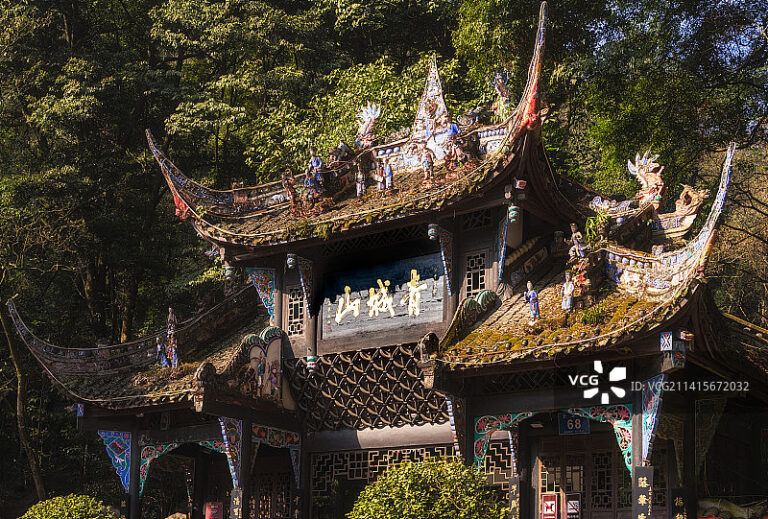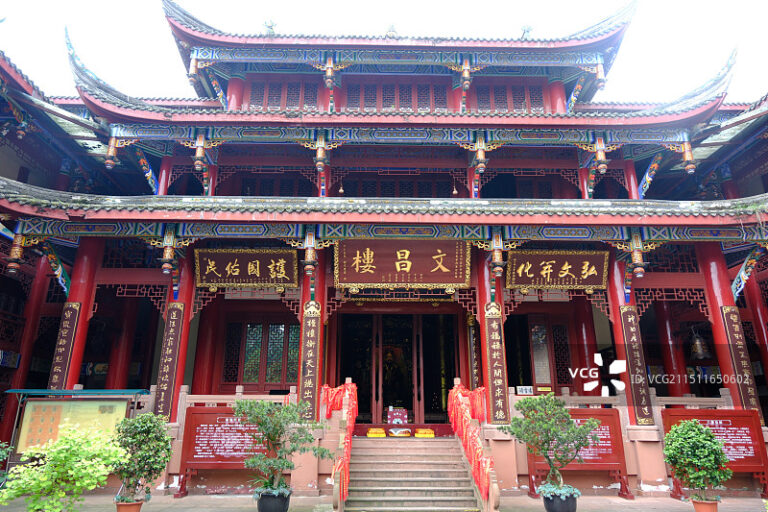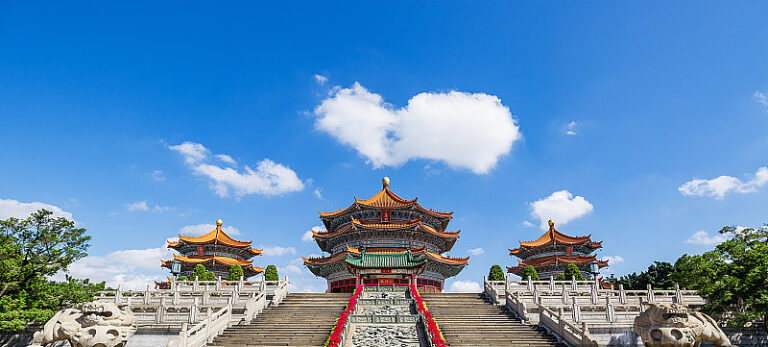- Books
- Purely-handmade
- Ritual Incense Burner
- Scroll Tube
- Ritual Incense Candle
- Bronze Gong
- Yellow Paper for Rituals
- Wooden Fish
- Seven-Star Sword
- Sanqing Bell
- Taoist Robe
- Crystal Bead Bracelet
- Cinnabar Pendant
- Jade Bead Bracelet
- Jade Pendant
- Taoist Shoes
- Zodiac Amulet
- Pixiu Figurine
- Bead Bracelet
- Handmade
- Feng Shui Figurine
- Recommendations
The Development of Taoism: From Philosophical Thought to Religious Practice
Taoism, one of China’s unique religious systems, is not only an essential part of Chinese culture but also a treasure of world civilization. Its long history spans thousands of years, undergoing a transformation from philosophical thought to a religious system, from the fusion of cultural traditions to a modern resurgence. This article will provide a detailed overview of Taoism’s development, exploring how it has grown and evolved over the centuries, becoming an influential philosophical and spiritual system globally.
1. The Philosophical Origins of Taoism: From Laozi and Zhuangzi to the Daoist School
The roots of Taoism can be traced back to the Spring and Autumn and Warring States periods around the 6th century BCE when various philosophical schools emerged in China. Taoist thought began with Laozi and Zhuangzi, two prominent philosophers.
Laozi‘s Tao Te Ching is one of the foundational texts of Taoist philosophy. In it, Laozi introduces the concepts of “Tao” (the Way) and “Te” (Virtue), emphasizing the natural order of the universe and advocating the principles of “wu wei” (non-action) and “heaven-human unity.” These ideas call for harmony with the natural world and promote a life led by simplicity and restraint.
Zhuangzi, in his Zhuangzi text, deepens these ideas, encouraging transcendence over worldly attachments and the pursuit of inner freedom and tranquility. Zhuangzi’s concept of “wu wei” (non-action) further enriches Taoist philosophy, emphasizing freedom from social constraints and the embrace of spontaneity and naturalness.
These ideas laid the intellectual foundation for Taoism, which evolved from a philosophical school into a distinct religious system.
2. The Religious Formation of Taoism: From Philosophy to Religious Practice
The religious transformation of Taoism began during the Han Dynasty. At this point, Taoist thought began to move beyond philosophy into the realm of religion, gradually forming a distinct religious system. In the 2nd century CE, Zhang Daoling, considered one of the founders of Taoism as a religion, established the Tianshi Dao (Way of the Celestial Masters), one of the earliest Taoist sects. Zhang Daoling emphasized the idea of “heavenly mandate” and the pursuit of immortality through virtue and good deeds.
With the establishment of Tianshi Dao, Taoism began to incorporate religious rituals, deities, and the concept of immortality, which became core elements of Taoist practice. Taoist temples, known as daoguan, started to emerge, and Taoist texts like the Tao Te Ching and Zhuangzi became key spiritual guides for practitioners.
As Taoism continued to evolve, it developed a more formalized system of religious practice, including rituals, divine worship, and moral teachings focused on achieving spiritual transformation and immortality.
3. The Prosperity of Taoism: Tang and Song Dynasties
The Tang Dynasty (618–907 CE) is considered the golden age of Taoism, especially during the reign of Emperor Xuanzong. Emperor Xuanzong was a strong supporter of Taoism, and his involvement in Taoist rituals and practices helped elevate Taoism to an official state religion. Taoism reached new heights in terms of influence, and Taoist temples and practices were integrated into both court life and the daily lives of common people.
During this period, Taoist practices such as alchemy, divination, and healing gained prominence. The Zhang Tianshi family continued to pass on Taoist teachings, and Taoism became a central part of both political and cultural life.
The Song Dynasty (960–1279 CE) further diversified Taoism with the rise of various sects. One of the most significant was Quanzhen Dao (Complete Perfection Taoism), founded by Wang Chongyang in the 12th century. Quanzhen Dao emphasized internal alchemy and meditation as methods for spiritual cultivation, advocating that practitioners could achieve immortality through self-cultivation and inner transformation.
During the Song and Yuan Dynasties, Taoism continued to grow in popularity and influence, with multiple schools coexisting and enriching the practice of Taoist religion and philosophy.
4. The Decline of Taoism: Ming and Qing Dynasties
Despite its prosperity in earlier periods, Taoism began to decline during the Ming (1368–1644) and Qing (1644–1912) Dynasties. The rise of Confucianism as the dominant state ideology marginalized Taoism, and the state’s support for Taoist institutions diminished. During the Qing Dynasty, Taoism, like many other religious practices, faced suppression, and Taoist temples and religious rituals were increasingly restricted.
However, Taoism did not disappear completely. It continued to thrive in folk beliefs, especially through practices like Taoist medicine, divination, and Tai Chi. Many Taoist rituals and customs remained vital in local communities, and Taoist ideas on health, longevity, and the pursuit of immortality continued to influence everyday life.
5. The Revival of Taoism: 20th Century to the Present
The 20th century saw a resurgence in Taoism, largely due to social and cultural changes in China. After the Cultural Revolution (1966–1976), which severely suppressed religious practices, Taoism, like many other traditions, began to experience a revival during China’s reform era in the 1980s. The growing interest in traditional Chinese culture led to a renewed appreciation of Taoist philosophy, health practices, and spiritual teachings.
Taoist practices such as Tai Chi, Qigong, and Taoist meditation gained international attention and popularity. Taoism’s emphasis on balance, health, and harmony with nature attracted people from all over the world, and its ideas about living in alignment with natural forces became increasingly relevant in the modern era.
Taoist temples and centers were reopened, and Taoist thought spread beyond China’s borders. Today, Taoism is practiced globally, and its teachings are embraced by those seeking spiritual growth, health, and a deeper connection to nature.
6. The Future of Taoism: Balancing Tradition and Innovation
As Taoism moves further into the 21st century, it faces both challenges and opportunities. Globalization and modernity present new obstacles to the preservation of Taoist traditions, but they also offer opportunities for Taoism to expand and influence new generations. The key to Taoism’s future will be its ability to adapt and innovate while maintaining the integrity of its core teachings.
Taoism’s focus on holistic health, meditation, and environmental harmony will continue to resonate with people in an increasingly chaotic world. As people seek solutions to modern problems like stress, environmental degradation, and a disconnect from nature, Taoism’s timeless wisdom offers practical solutions.
7. Conclusion
The development of Taoism has been a journey of transformation—from a philosophical school to a rich religious tradition, from cultural integration to a modern global movement. Taoism’s profound impact on Chinese culture and its growing influence worldwide is a testament to the lasting relevance of its core teachings. As Taoism continues to evolve and adapt to contemporary needs, it remains a vital source of wisdom and spiritual guidance for people across the globe, offering a path to harmony, health, and inner peace.






